1
/
11
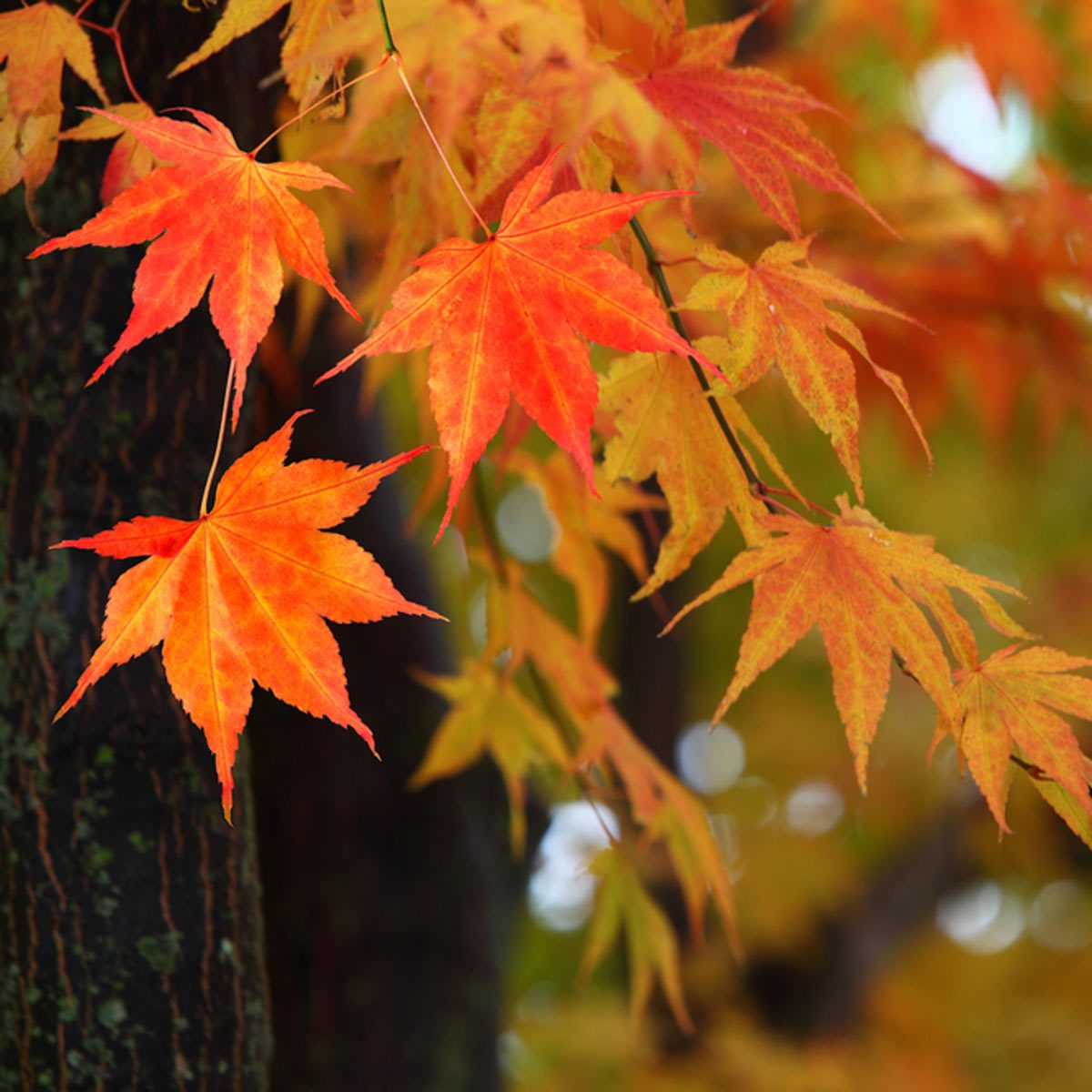
Japanese Maple Tree Fall Foliage
Japanese maple (Acer palmatum) is beloved not only for its shape (which ranges from umbrella to spreading, depending on cultivar) but also for its palm-shaped leaves. They're green or burgundy, full or deeply cut and always colorful in autumn. The green-leaved Japanese maples have the best fall foliage color, as you can see in the photo, but the burgundy varieties aren't too shabby, taking on a brighter hue of red. Japanese maples like part sun and well-drained, slightly acidic soil. They are hardy in Zones 5 or 6-8, depending on cultivar.
Here’s your guide to when to decorate for fall.
2
/
11
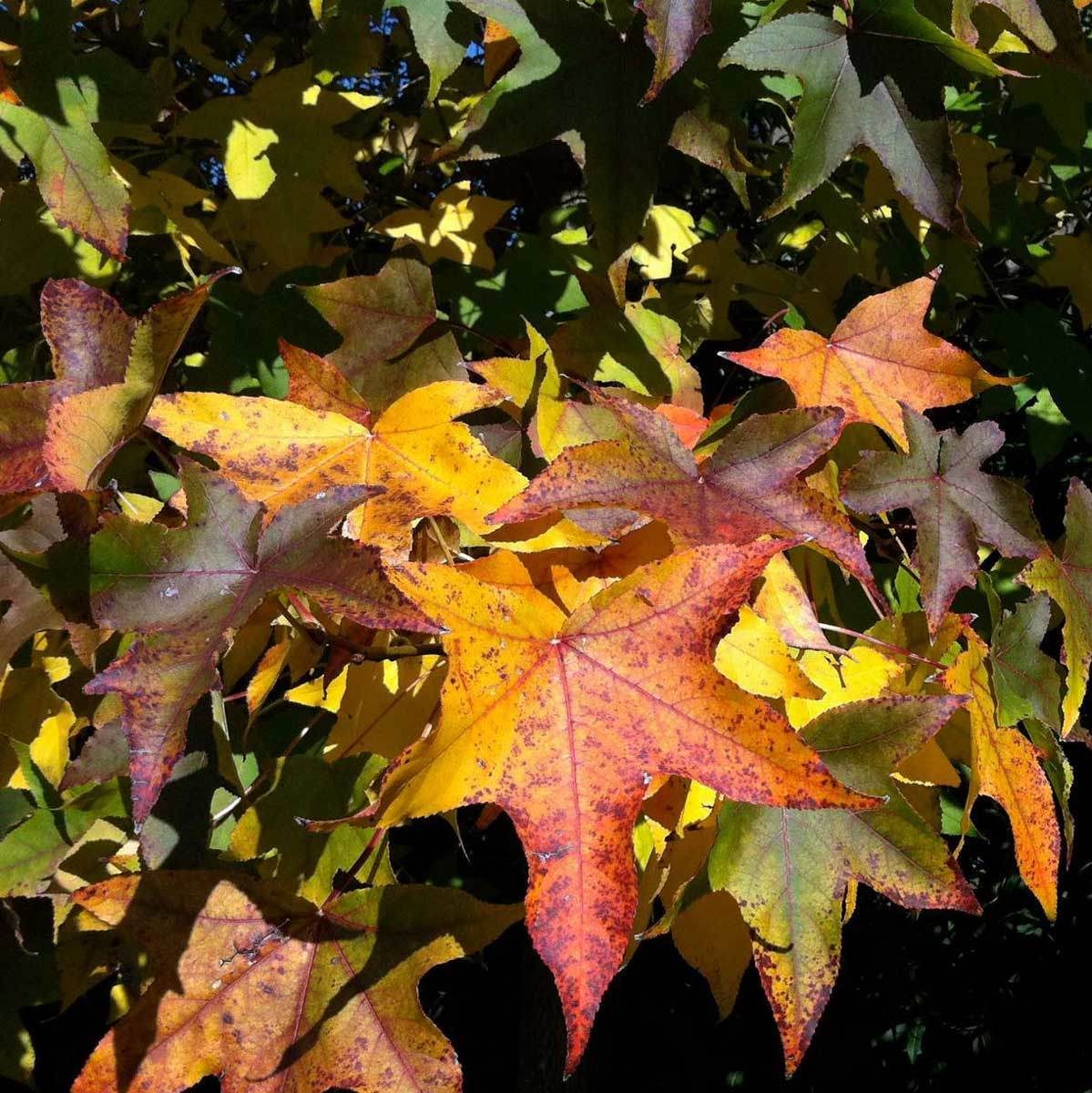
Sweet gum
Sweet gum (Liquidambar styraciflua) is often mistaken for a maple. The leaves have a similar shape, and the fall foliage color, well, that's bright and festive, just like a maple. Sweet gum leaves turn a mix of red, orange and yellow, often on the same tree. Although in the wild it's often found in damp soil, it adapts to a range of soils. Sweet gum is hardy from Zones 5-9.
3
/
11
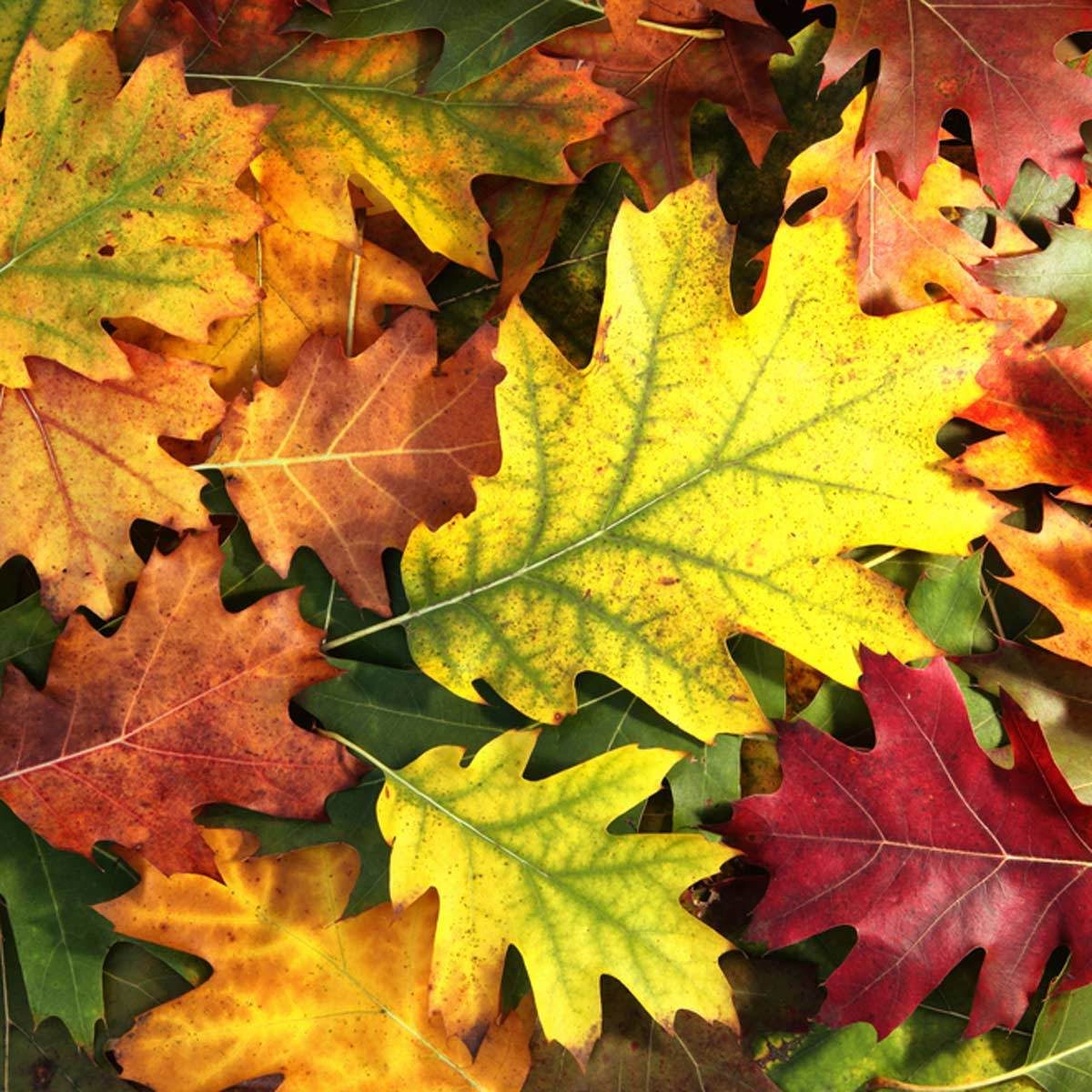
Good Front Yard Trees: Red oak
Despite the name, red oak (Quercus rubra) doesn't always turn red in fall foliage. Some specimens turn yellow and brown. Either way, it's a great oak to have not only in fall but throughout the year. Red oak is one of the fastest growing oaks and does well in full sun and well-drained, acidic soil. It is hardy in Zones 3-9. Oaks too big for your yard?
4
/
11
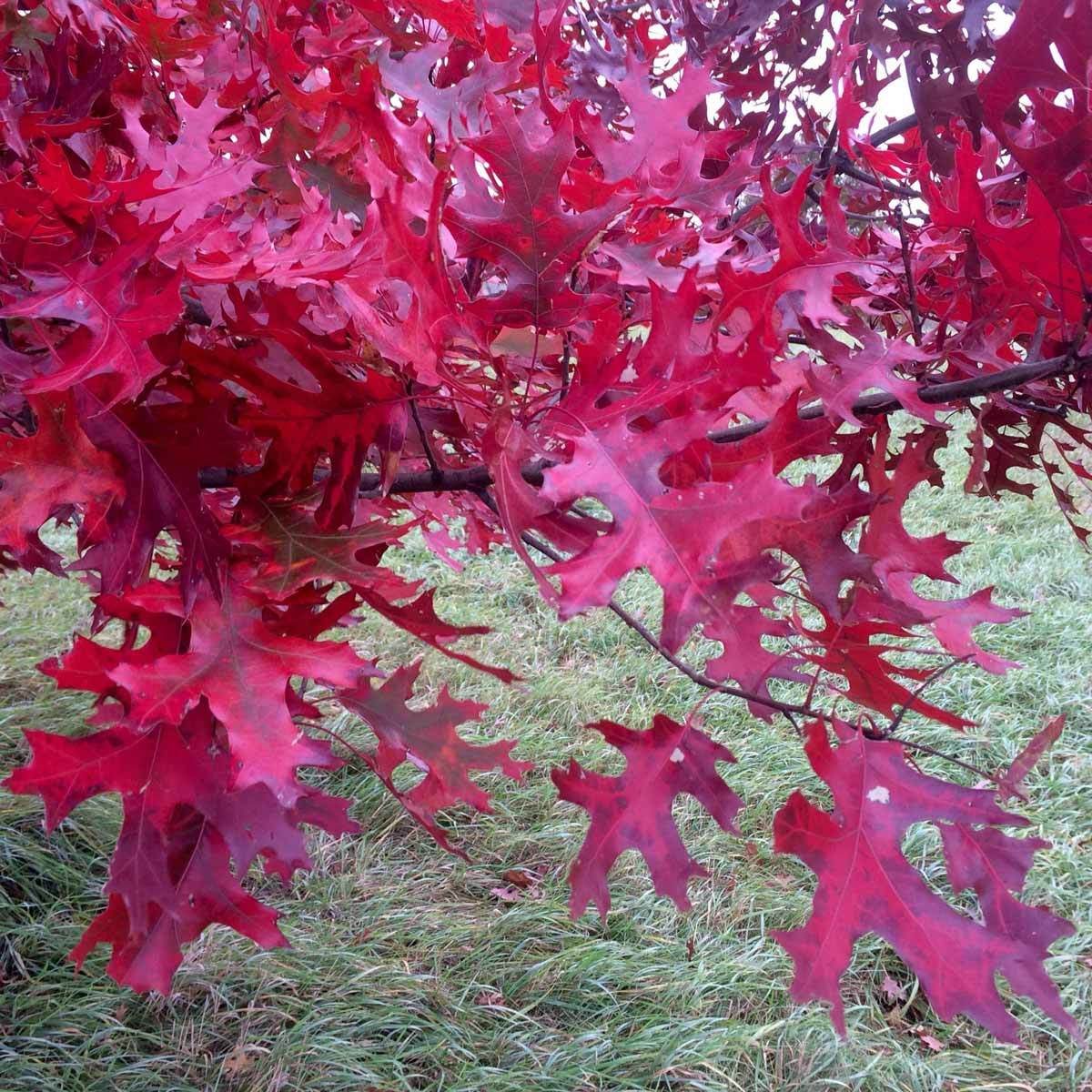
Scarlet oak
Scarlet oak (Quercus coccinea) is the oak to plant if you really want dependable red fall foliage color. Although less common in the nursery trade, scarlet oak has many of the same fine attributes as red oak. The pyramidal shape is more reminiscent of pin oak. However, it accepts both moist and dry soils like clay. Scarlet oak is hardy in Zones 4-8.
Photo: Luke Miller/Oldsmobile Trees
5
/
11
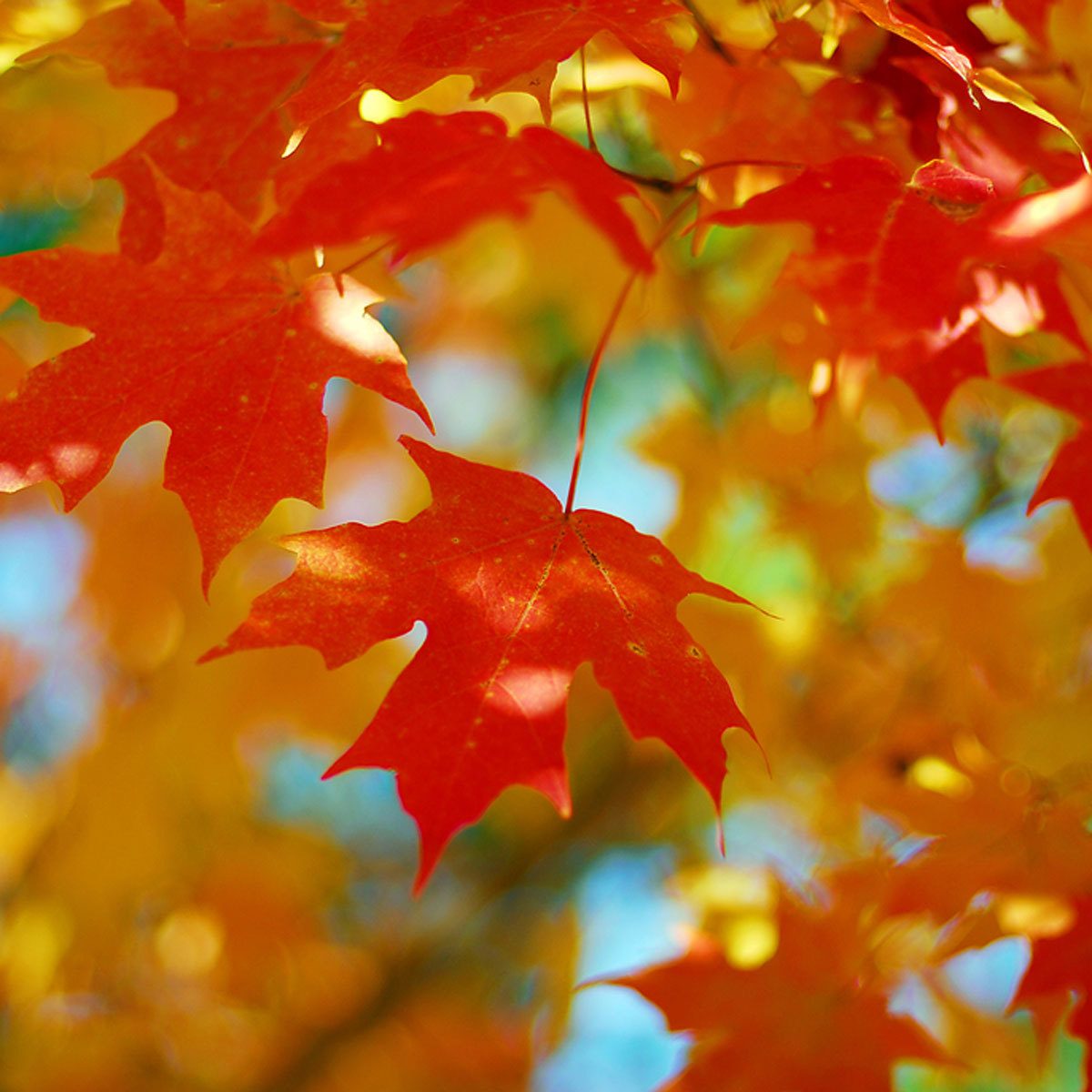
Sugar maple
If you can plant just one tree for fall foliage, make it a sugar maple (Acer saccharum). It's the king of autumnal splendor and looks even more grandiose as it matures. The orange-red leaves of the maple tree look like they're on fire in fall. Sugar maple accepts more shade than most species, but it will grow best (and color brightest) in full sun. It is hardy in Zones 3-9.
6
/
11

Sassafras
Sassafras (Sassafras albidum) is sadly lacking in the home landscape and that's a shame. How many species have four different shapes of leaves on the same tree? And in fall the aromatic fall foliage turns a glorious mix of gold, red and orange. Sassafras can be pyramidal to irregular in shape. It often forms suckers in the wild. It is hardy in Zones 4-8.
7
/
11
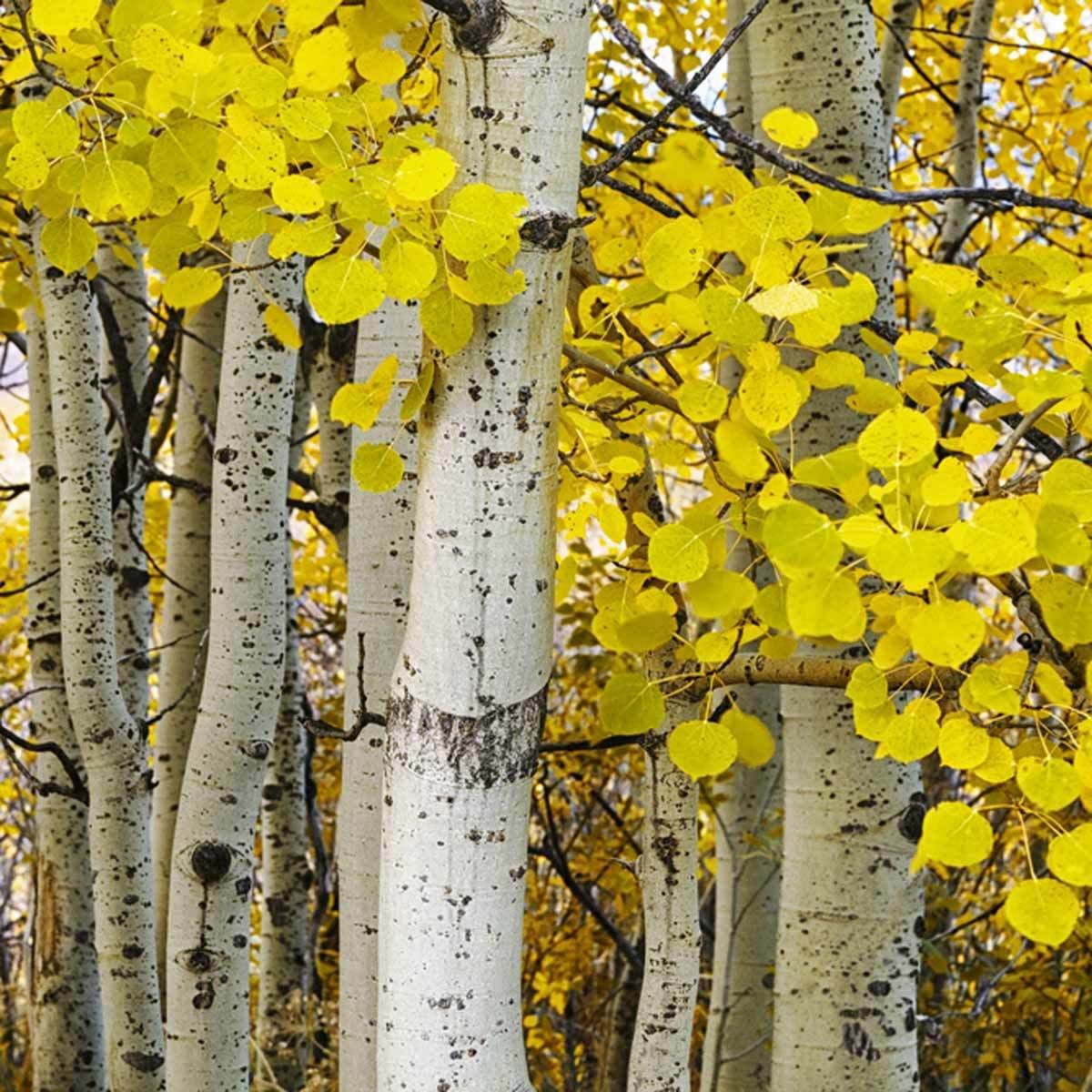
Aspen
Trembling, or quaking, aspen (Populus tremuloides) are known for their fall foliage, which flutter in the slightest breeze. It's music to the ears on a hot day, lending a psychologically cooling sound. Come fall, it's all about the visuals, with the bright yellow leaves looking fantastic against the whitish green bark. Aspen grows fast and looks great in bunches. It is hardy in Zones 2-7.
8
/
11
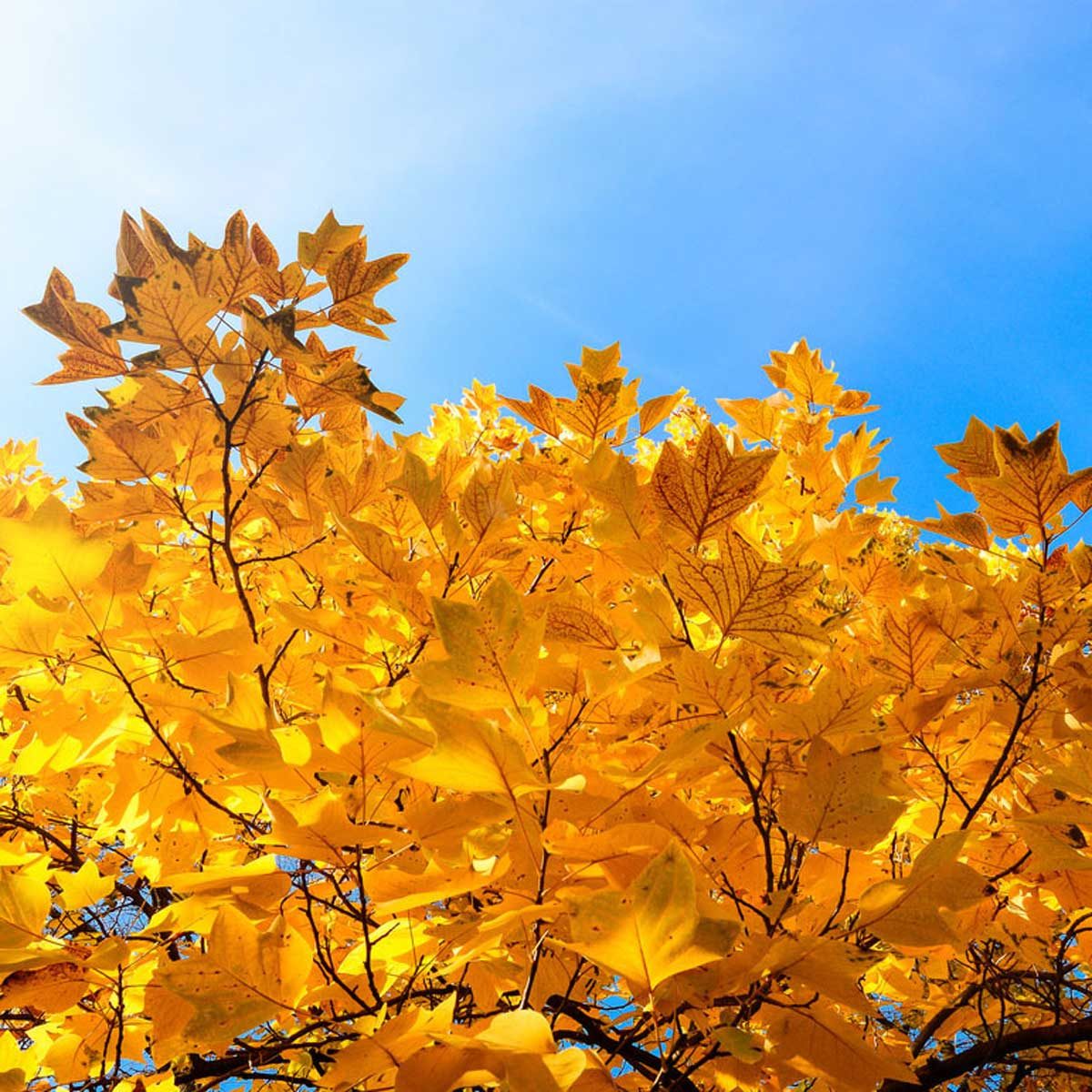
Tulip tree
Tulip tree (Liriodendron tulipifera) is easy to identify. This is thanks to the leaves, which are shaped like the silhouette of a tulip. Attractive throughout the season, the leaves take on added appeal in fall foliage when they turn golden yellow. The species also boasts intriuging lime and orange tuliplike flowers in spring. Tulip tree is hardy in Zones 4-9.
9
/
11
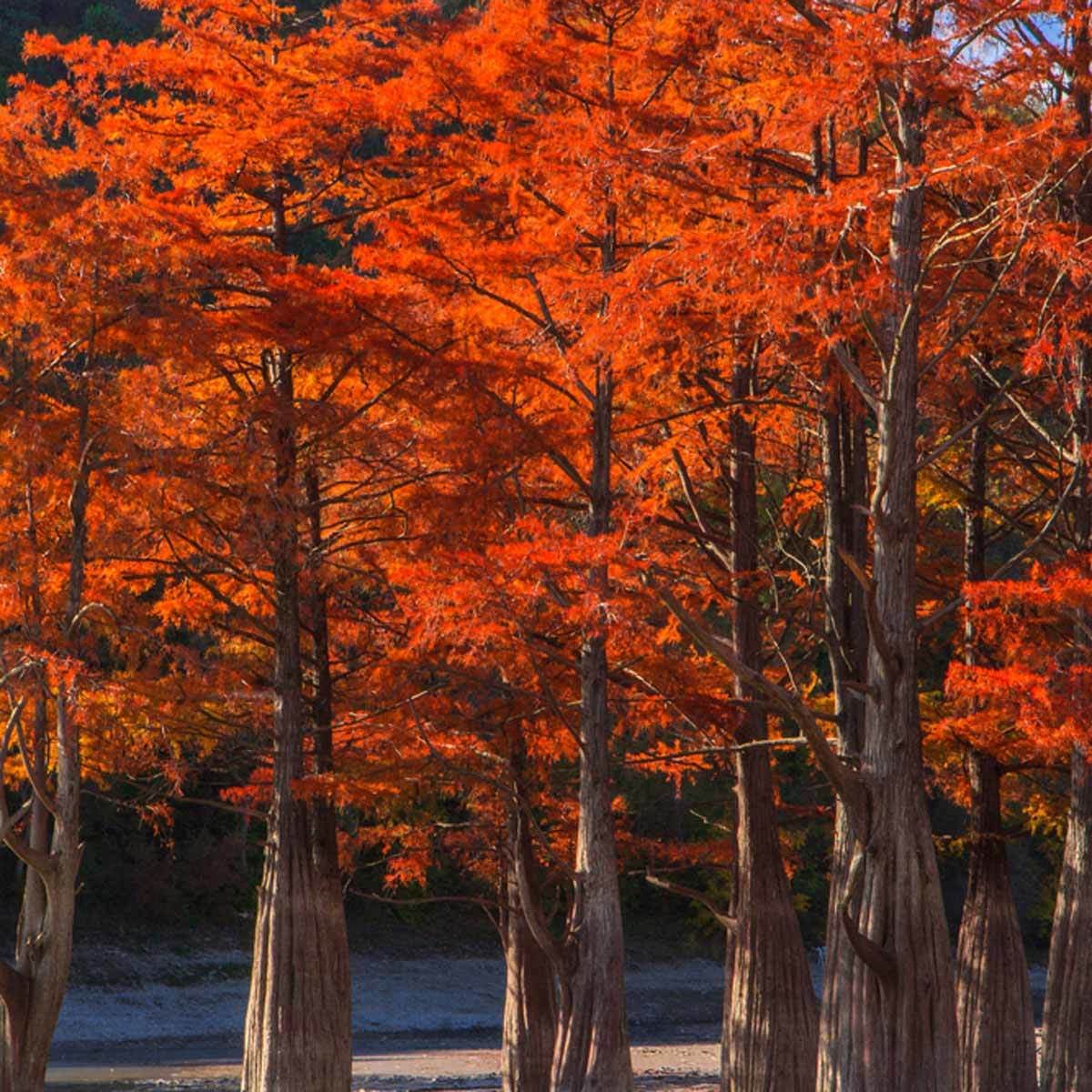
Bald Cypress
Don't let the picture fool you. Bald cypress (Taxodium distichum) isn't restricted to the swamps (although as you can see, it does thrive there). No, this beautiful tree grows in regular soil, too. That's good for home gardeners. Because it means you have a chance to enjoy watching the evergreen-like needles turn bright orange fall foliage before dropping in late fall. Until that time, you'd swear it was an evergreen tree! Bald cypress is hardy in Zones 4-9.
10
/
11
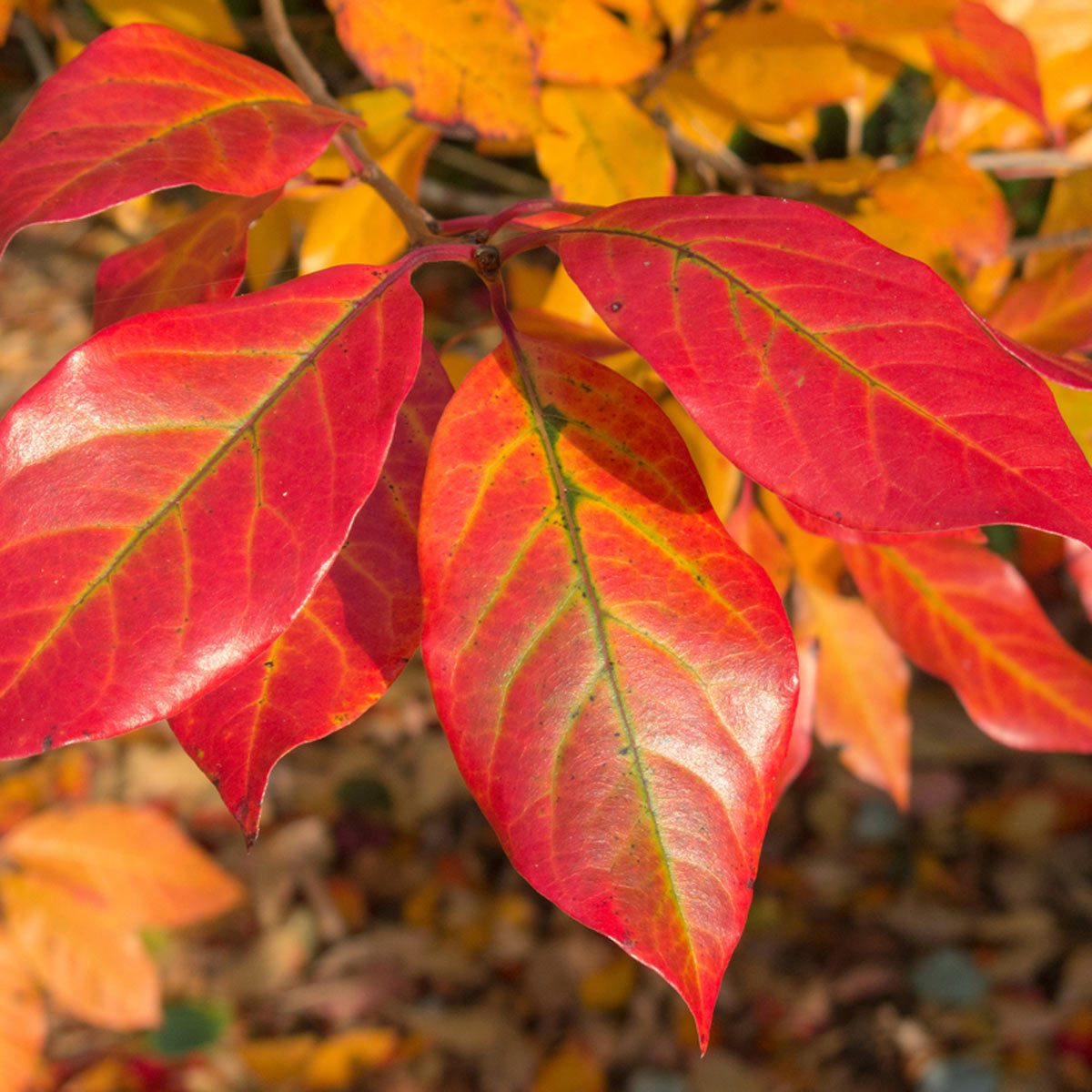
Tupelo
Tupelo (Nyssa sylvatica) is also known as black gum. It's a slow-growing pyramidal-shaped tree of moist lowlands, but it also survives in upland soils. The glossy green leaves turn bright yellow, orange, red and maroon in fall foliage. It is hardy in Zones 4-9.
11
/
11
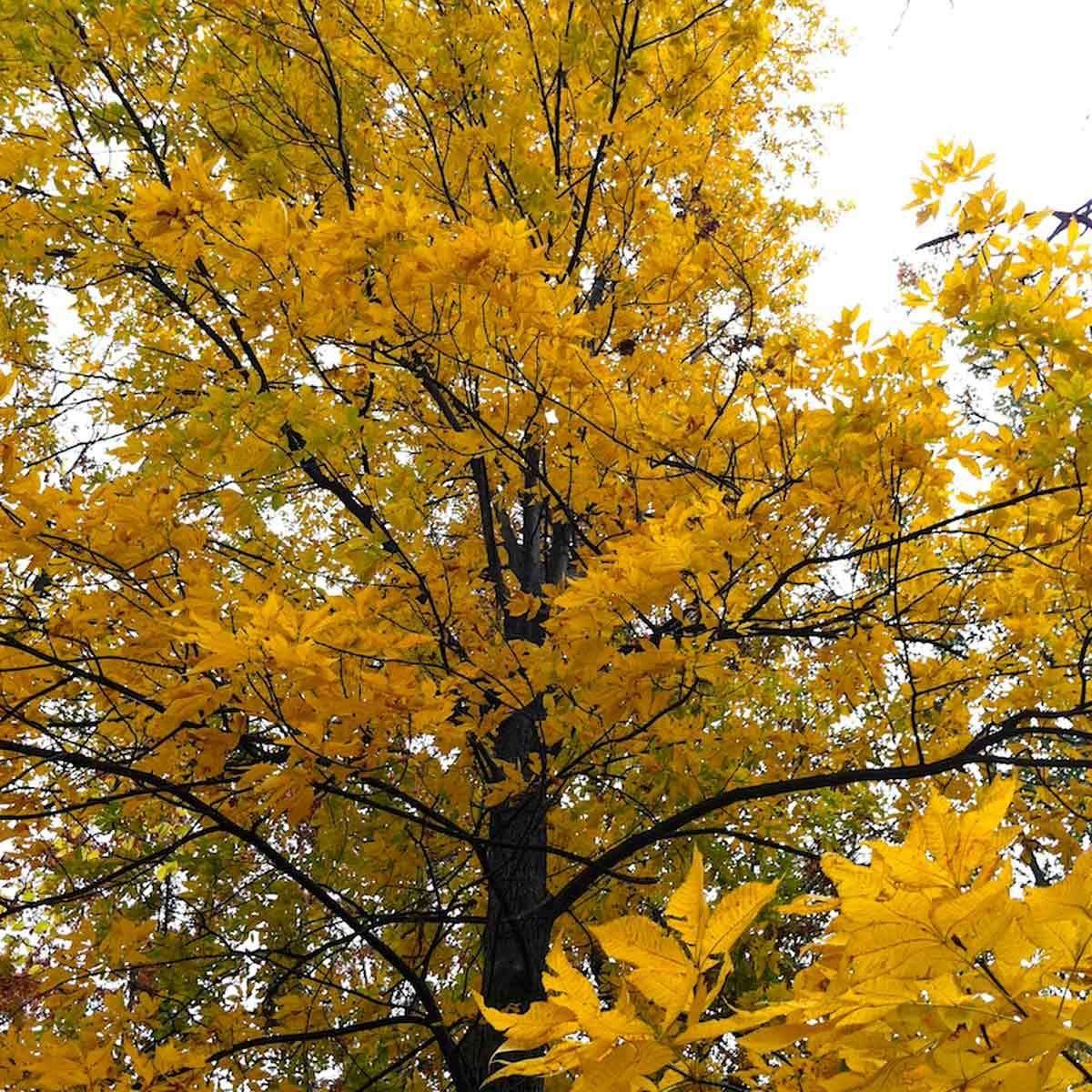
Hickory
The golden yellow fall foliage of hickory cannot be missed! It looks particularly good on shagbark (Carya ovata) and shellbark (Carya laciviosa). And look especially great when seen against the shaggy gray bark that is a hallmark of both species. Of course, there is the bonus of edible (and tasty) nuts ripening at the same time. Shagbark and shellbark hickory are seldom found at garden centers, so you may have to order bare-root seedlings from a mail-order catalog or from the Arbor Day Foundation. Both hickories are hardy in Zones 4-9.
Photo: Luke Miller/Oldsmobile Trees